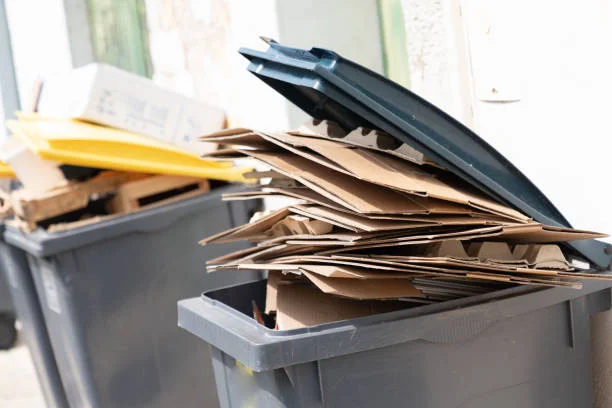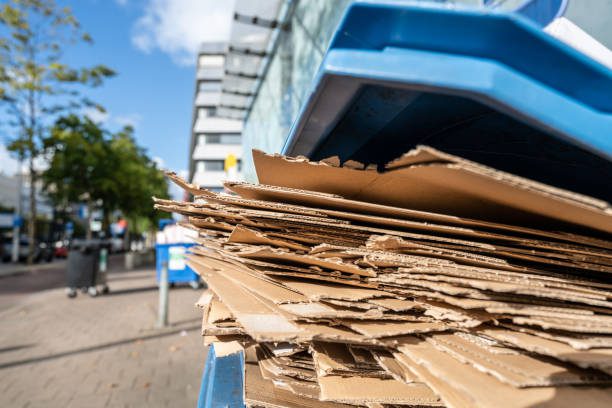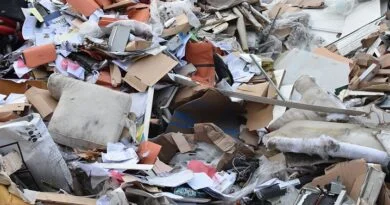Ways To Generate Income From Commercial Wastes
Commercial wastes also referred to as commercial trash or business wastes are rubbish produced by establishments like corporations and organizations. This could include garbage from workplaces, stores, factories, building sites, and other commercial enterprises. Businesses often create garbage made up of plastics, papers, packaging materials, food leftovers, and other things.
The correct disposal of commercial waste is necessary to protect the environment and the general public’s health. Recycling, composting, and the proper disposal of hazardous waste are ways to do this.
Recycling business wastes is crucial for a number of reasons. It initially aids in resource preservation by lowering the need for fresh raw material mining. This could aid in preserving biodiversity and ecosystems.
Recycling furthermore contributes to a decrease in the volume of garbage disposed in landfills, which might contribute to a reduction in pollution and greenhouse gas emissions.
By supplying new products with raw materials and eliminating the need for energy-intensive manufacturing processes, recycling may also encourage economic growth and the creation of jobs.
Businesses can make money by selling recyclables, which lowers disposal costs and allows them to spend less money on trash removal. In general, recycling business waste is a crucial step toward promoting sustainability and safeguarding the environment.
There are a variety of risks associated with commercial waste to both the environment and human health. These are a few instances:
i. Chemical risks: Hazardous substances that could endanger human health and the environment by seeping into the soil and water may be present in some commercial waste, including batteries, electronics, and pesticides.
ii. Biological risks: If handled and disposed of inappropriately, medical waste, including sharps and infectious materials, may transmit illnesses and infections.
iii. Physical risks: If heavy or bulky materials, such furniture or appliances, are not disposed of appropriately, they might be dangerous and lead to injury or equipment damage.
iv. Fire risks: If improperly kept or disposed of company garbage, such as aerosol cans, can catch fire.
These dangers might be reduced with the use of efficient waste management, which involves segregation, storage, transportation, and disposal.
There could be restrictions on how commercial waste, which is regularly generated by enterprises, is kept, handled, transported, and disposed of depending on the jurisdiction.
This may include specifications for the waste products correct labeling and packing as well as rules for the kinds of rubbish that may be disposed of in certain ways (such as hazardous waste that must be specially handled).
In the US, the Environmental Protection Agency (EPA) establishes national guidelines for the management of commercial waste, however local states and municipalities may also have their own rules. California, for instance, has a long set of specifications for managing business trash, including advice on recycling and composting.
For the purpose of avoiding fines or penalties, businesses must be aware of and adhere to all relevant laws. They may also think about putting their own sustainability measures into action, including cutting down on waste, recycling, or employing eco-friendly goods and services.
Several different goods may be made from commercial trash. The examples are as follows:
• Recycled paper may be used to create new paper products, including cardboard, office paper, and newspapers.
• Compost: Food scraps and yard trash may be composted to create a nutrient-rich soil amendment for gardening and agriculture.
• Refined metals: It is possible to collect scrap metal and melt it down to create whole new metal products.
• Plastic products: Recycled plastic waste may be used to create brand-new plastic products like bags, patio furniture, and lumber.
• Building supplies: Waste materials, such as glass, brick, and concrete, may be crushed and used as aggregate in construction projects.
• Biofuels: Biofuels like ethanol and biodiesel may be made from organic waste materials like leftover food and yard debris.
• Energy generation: Municipal solid waste (MSW) is burnt to produce electricity, heat, and steam at waste-to-energy facilities.
These are just a handful of the various products that may be created from waste from businesses. Waste management attempts to lessen the amount of trash that ends up in landfills by recycling waste materials.
Ways To Generate Income From Commercial Wastes

(1) Material recycling and resale
Papers, plastics, and metal may all be recycled and sold again to manufacturers as business waste. Garbage diversion, often known as recycling and selling items from business waste, may have numerous positive effects on the environment and the economy.
It promotes the preservation of natural resources, the reduction of pollution and greenhouse gas emissions, and the creation of employment in the manufacturing and recycling sectors. Paper, cardboard, plastic, metal, and glass are a few typical items that may be recycled from business trash.
Additionally, by lowering disposal costs and even making money from the sale of the recycled materials, companies and organizations may save money by repurposing items from commercial trash. Overall, business waste materials may be recycled and sold again to help make resource usage more sustainable and effective.
(2) Composting
The process of converting organic waste from commercial sources, such as food scraps from restaurants and grocery shops, into compost, a nutrient-rich soil supplement, is referred to as composting commercial wastes.
Vermicomposting, which involves utilizing worms to break down the trash, is one approach that may be used to complete this process. Another is to utilize commercial composting facilities.
Commercial composting produces a soil amendment that may be utilized in agriculture and gardening to enhance the health and fertility of the soil. Organic waste may be composted and sold as fertilizer or soil amendment, including kitchen leftovers and yard trash.
Read Also: Ways To Generate Income From Bulky Wastes
(3) Waste-to-energy
Garbage-to-energy (WTE) is a process that turns non-recyclable waste into useful energy sources, such heat or electricity. This may include materials from commercial garbage like paper, plastics, and food waste.
The procedure usually entails burning the waste products in a specialized facility, where the heat produced is then utilized to produce electricity or steam. WTE may help decrease the quantity of garbage that is disposed of in landfills and act as a source of renewable energy.
Regarding air pollution and greenhouse gas emissions in particular, there are worries regarding how WTE would affect the environment. Through procedures like incineration or gasification, certain business waste may be turned into energy. The energy produced may be resold to the grid.
(4) Second-hand product sales
Upcycling, the practice of reusing or renovating abandoned materials or products for resale, is the term for the practice of selling used items made from commercial trash. Clothing, furniture, electronics, and other things fall under this category.
Instead than disposing of things in landfills, upcycling may be a sustainable strategy to minimize waste and repurpose resources. It may also be a means for companies to profit from resources that would otherwise be thrown away. Clothing and other commercial trash may be sold at thrift stores, flea markets, or internet marketplaces.
(5) Repurposing
Upcycling is the practice of using discarded materials to create new, more valuable goods. By discovering new applications for materials that would otherwise be thrown away, this may be applied to commercial waste.
For instance, used tires can be used to create playground equipment and plastic bottles can be transformed into clothing or bags. In addition to lowering the amount of waste dumped in landfills, upcycling saves resources and lessens the demand for new materials.
Creatively reusing waste materials to make new products, such as upcycling old clothing into new items like bags, quilts, or rugs or turning old tires into garden planters.
Read Also: Ways To Generate Income From Biomedical Wastes
(6) Mining in Landfills
Excavating and processing trash from abandoned landfills in order to recover valuable resources like metals, plastics, and glass is known as landfill mining. By removing pollutants and reducing the amount of waste that needs to be managed, the process can also help to lessen the landfill’s negative effects on the environment.
Commercial waste may also be subject to landfill mining, but it will depend on the types of materials present in the landfill and the state of the waste. For some landfills, the process might not be economically feasible due to its cost. Removing precious resources like metals, minerals, and fossil fuels from landfills.
(7) Services for waste management
Commercial waste management services typically involve the collection, transportation, disposal, and recycling of waste produced by businesses, such as offices, retail locations, and dining establishments. The provision of waste containers, regular pick-up schedules, and options for the recycling and composting of specific materials are a few examples of these services.
To assist businesses in enhancing their waste management procedures and minimizing their environmental effect, certain commercial waste management organizations could also provide consultancy services. Companies may provide other companies waste management services, such as collection and disposal.
(8) The creation of biogas
Anaerobic digestion (AD) technology is used to transform organic waste materials, such as food waste, into methane-rich biogas during the biogas generation process from commercial wastes. Without oxygen, the waste products are broken down by microbes, creating biogas that may be utilized as a sustainable energy source.
A nutrient-rich liquid fertilizer is another result of the procedure. Municipalities and commercial waste management firms may employ this technology to generate sustainable energy while reducing the quantity of garbage transported to landfills.
Anaerobic digestion may turn organic waste, including food scraps and agricultural waste, into biogas. Biogas may be utilized as a fuel for electricity and heating.
Read Also: Sulphur Content of Soils, Forms and Functions of Sulphur in Plants



